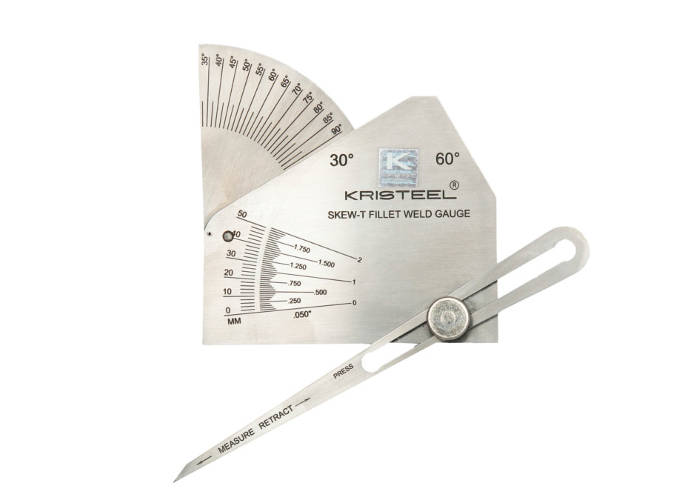The Ultimate Overview to Fillet Weld Quality Assurance: Making Sure Strength and Toughness in Your Welded Joints
In the world of welding, ensuring the strength and toughness of fillet welds is vital for the integrity of bonded joints. As we begin on this expedition of fillet weld high quality control, we will certainly uncover important factors that affect weld stamina, dive right into efficient examination techniques, and discuss approaches for stopping typical weld defects.
Significance of Fillet Weld Quality Assurance
Making sure appropriate fillet weld quality assurance is vital in ensuring the architectural stability and longevity of welded parts in various industries. Fillet welds are commonly utilized in structural steelwork, bridges, pressure vessels, pipelines, and various other vital framework where the stamina of the weld is critical to general safety and security and efficiency. Quality control procedures such as aesthetic inspections, non-destructive screening, and adherence to welding treatments help determine prospective flaws like absence of combination, insufficient infiltration, damaging, or excessive reinforcement.
Secret Factors Influencing Weld Stamina
Attaining optimal weld stamina requires cautious factor to consider of various essential aspects that affect the integrity and longevity of the welded joint. The first critical element is appropriate joint preparation, which includes cleaning the base metals to eliminate any kind of pollutants that might damage the weld. Furthermore, the fit-up of the joint is essential to guarantee correct penetration and fusion of the filler product.
The selection of the appropriate welding method and parameters likewise plays a substantial role in establishing weld strength. Aspects such as warmth input, travel speed, and electrode angle can influence the quality of the weld. Additionally, keeping the correct interpass temperature throughout multi-pass welding is essential to stop splitting and make certain a strong bond between the layers.
Moreover, the selection of filler product and its compatibility with the base metals is important for attaining high weld toughness. Using filler material with the suitable mechanical homes can improve the overall stability of the weld. Finally, post-weld warm therapy and appropriate assessment strategies are crucial actions in making certain the toughness and resilience of the welded joint.
Examination Approaches for Weld Honesty

An additional crucial evaluation technique is fluid penetrant screening, where a fluid dye is put on the weld surface - Gauge Fillet Weld. The color seeps right into any kind of surface-breaking problems, making them noticeable under UV light. This approach works for identifying problems that might not show up to the naked eye


Ultrasonic testing is additionally extensively used for examining weld stability. High-frequency acoustic wave are routed right into the weld, and any kind of disturbances in the sound wave pattern indicate potential issues like cracks or absence of blend.
These assessment methods play a vital role in ensuring look these up the top quality and integrity of welds, eventually adding to the total toughness and toughness of bonded joints in industrial settings.
Preventing Usual Weld Flaws
In order to keep the structural honesty of bonded joints in industrial applications, it is crucial to carry out precautionary measures to attend to usual weld defects. One typical problem is absence of fusion, where the filler material falls short to bond sufficiently with the base steels, bring go to my site about weak points in the weld. This can be avoided by making certain correct heat control and using the right welding method.
An additional constant concern is porosity, brought on by gas entrapment in the weld metal during the welding process. To avoid this, it is important to cleanse the base steels thoroughly, use dry electrodes, and maintain a suitable welding environment with proper ventilation.
Additionally, cracks in welds can compromise the joint's strength. To avoid this defect, it is necessary to control the cooling rate after welding, use pre-heating when necessary, and pick ideal welding criteria.
Enhancing Bonded Durability With Proper Strategies
One critical technique to enhance weld longevity is to make sure proper weld grain placement. By positioning the weld grain precisely within the joint, the weld's toughness and resistance to tiredness can be significantly enhanced.
Furthermore, utilizing appropriate pre-weld and post-weld warm therapies can help in reducing residual stress and anxieties and enhance the weld's sturdiness, making it a lot more immune to breaking and failing in time. An additional technique to improve weld durability is to use high-quality welding consumables and base materials. Picking the right filler steel and making certain visit this page the tidiness of the base steels can protect against additions and various other problems that can jeopardize the weld's toughness. By implementing these appropriate strategies, welders can ensure that their welded joints display remarkable toughness and sturdiness, meeting the finest quality criteria.
Conclusion
In verdict, preserving excellent quality control criteria for fillet welds is critical for ensuring the stamina and resilience of bonded joints. By understanding the key aspects affecting weld stamina, utilizing evaluation techniques for weld integrity, avoiding typical weld issues, and using correct strategies, welders can boost the total toughness of their welds. It is essential to focus on top quality control procedures to produce resilient and dependable bonded joints.
In the world of welding, ensuring the toughness and toughness of fillet welds is critical for the honesty of welded joints. As we embark on this expedition of fillet weld quality control, we will certainly uncover essential aspects that influence weld stamina, delve right into effective assessment methods, and review techniques for protecting against typical weld defects.Accomplishing optimal weld stamina requires mindful consideration of numerous essential factors that influence the honesty and sturdiness of the bonded joint (Gauge Fillet Weld).In conclusion, keeping high quality control criteria for fillet welds is important for making certain the stamina and durability of bonded joints. By understanding the essential variables impacting weld toughness, utilizing examination techniques for weld honesty, avoiding typical weld problems, and using proper strategies, welders can enhance the general longevity of their welds